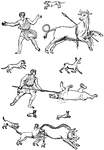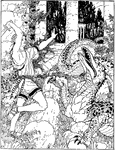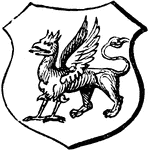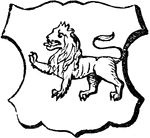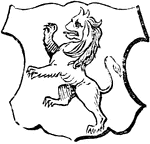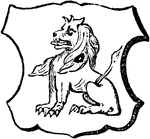Clipart tagged: ‘beast’
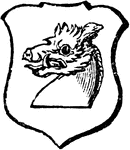
Boar Couped
"Argent, a boar's head proper couped. COUPED. The head or limbs of any animal cut close is called couped."…

Boar Tusked
"Argent, a boar's head, erased proper, tusked gules. TUSKED. Any animal having tusks of a different…

Boar's Head Erect
"Argent, a boar's head erect, and erased. ERECT. This is said of any animal or parts of animals, naturally…
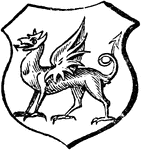
Dragon
"Argent, a dragon proper, tail nowed. DRAGON.. An imaginary monster; a mixture of beast, bird, and reptile.…
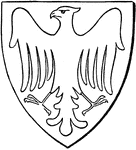
Eagle
The heraldic charge of the eagle is one of the earliest charges. It holds the same rank that the lion…

Erased
"A Lion's Head Erased. In heraldry, represented as having been forcibly torn off, the separated parts…

Gambe
"GAMBE. An obsolete French word, signifying a leg, and is still used in Heraldry, for the leg of a lion…
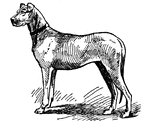
Great Dane
The Great Dane is a dog which has at different times been called the 'boar-hound', the 'German Mastiff',…

Lion
"The lion holds an important place among the animals born in coat-armor. As early as the 12th century,…
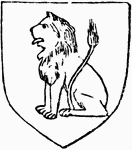
Lion
"The lion holds an important place among the animals born in coat-armor. As early as the 12th century,…

Lion Couchant
"Lion couchant. COUCHANT. The French word for lying down with the breast towards the earth, and the…
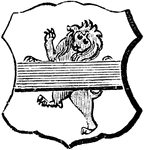
Lion Debruised
"Argent, a lion rampant guardant gules, debruised by a fess azure. DEBRUISED. Any animal that has an…
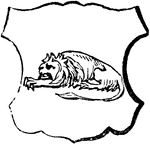
Lion Dormant
"Lion dormant. DORMANT. The French word for sleeping, used to denote the posture of a lion, or any other…

Lion Rampant Double-Headed
"Lion rampant double-headed. RAMPANT. Any beast in a fighting attitude." -Hall, 1862
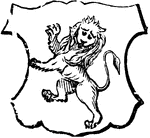
Lion Rampant Gardant
"Lion rampant gardant. RAMPANT. Any beast in a fighting attitude." GARDANT. Facing foward. -Hall, 1862
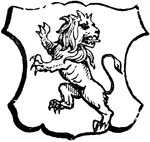
Lion Rampant Regardant
"Lion rampant regardant. RAMPANT. Any beast in a fighting attitude. REGARDANT. An animal looking towards…
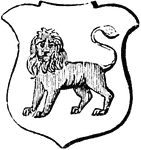
Lion Statant Gardant
"Lion statant gardant. STATANT. An animal standing still with all its legs on the ground." GARDANT.…
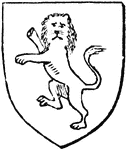
Gardant Lion
"The lion holds an important place among the animals born in coat-armor. As early as the 12th century,…
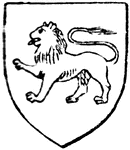
Passant Lion
"The lion holds an important place among the animals born in coat-armor. As early as the 12th century,…
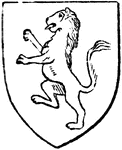
Rampant Lion
"The lion holds an important place among the animals born in coat-armor. As early as the 12th century,…
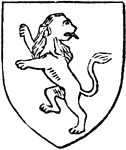
Rampant Regardant Lion
"The lion holds an important place among the animals born in coat-armor. As early as the 12th century,…
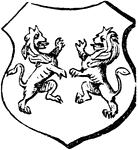
Lioncels Combatant
"Lioncels combatant. LIONCELS. Two or more lions. COMBATANT. A French word for fighting." -Hall, 1862
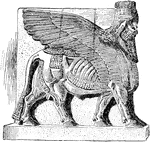
Colossal Man-Beast
"Colossal Man-Beast in alabaster, from the Palace of Sargon (now in the Louvre)." - West, 1904
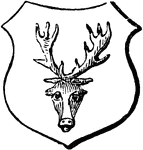
Stag Caboshed
"Argent, a stag's head caboshed, proper. CABOCHED or CABOSHED. Beasts' heads borne without any part…
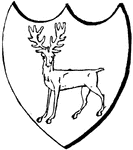
Statant Guardant
Hart at Gaze. The deer standing at gaze (facing the viewer) shows the statant guardant attitude of a…
